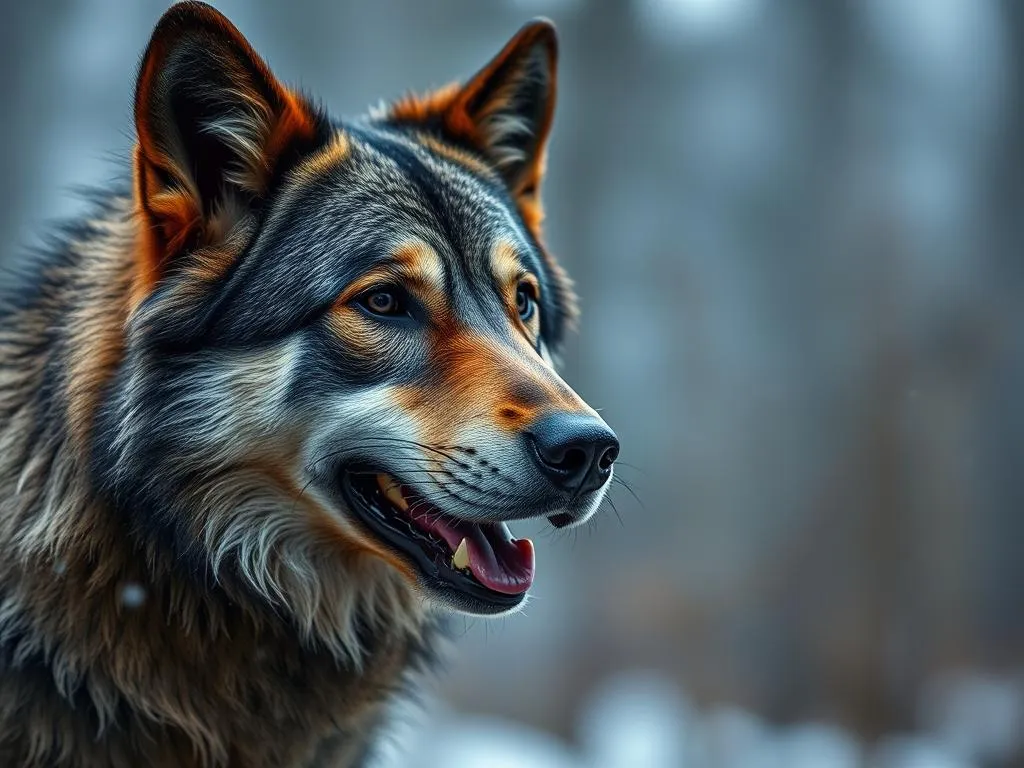
Introduction
Ensuring your dog’s health and safety is fundamental to responsible pet ownership. As dogs are frequently taken on outdoor adventures, concerns about their safety from wildlife, particularly wolf attacks, have become increasingly relevant. Wolves, once thought to be distant threats, are now appearing closer to urban areas, raising alarms for dog owners. This article will provide you with actionable tips and strategies on how to keep dogs safe from wolf attacks.
Understanding Wolf Behavior
The Nature of Wolves
Wolves are highly social animals, living in packs that can range from two to over ten members. Their social structure is complex, involving hierarchies that dictate behavior and roles within the group. Wolves typically inhabit remote forested areas, mountains, and tundras, but as their populations grow, they are increasingly encroaching on suburban and rural settings. Understanding their natural behavior is crucial for preventing encounters.
Reasons for Wolf Attacks on Dogs
Wolf attacks on dogs often stem from competitive behavior, particularly over territory or food. When a wolf perceives a domestic dog as a threat or competition, it may act aggressively to defend its resources. Protective instincts also come into play; if a wolf feels threatened or cornered, it may see a dog as a potential danger or rival. Recognizing these motives can help owners make better decisions in wolf-prone areas.
Statistics on Wolf Attacks
Recent data indicates that wolf attacks on domestic dogs, while still relatively rare, have been increasing in certain regions. Areas with significant wolf populations, such as parts of Canada, Alaska, and the upper Midwest of the United States, report higher instances of these encounters. Understanding these statistics is vital—knowing where and when risks are heightened can inform your strategies for how to keep dogs safe from wolf attacks.
Risk Assessment
Identifying High-Risk Areas
Certain regions are more prone to wolf activity, particularly where human encroachment has reduced their natural habitats. States like Montana, Idaho, and Wyoming have robust wolf populations, and encounters are more likely during dusk and dawn when wolves are most active. Seasonal variations also play a role; during the breeding season in late winter and early spring, wolf behavior may become more territorial, increasing the risk to your dog.
Assessing Your Dog’s Vulnerabilities
Not all dogs face the same risks when it comes to wolf encounters. Factors such as size, breed, and temperament can influence vulnerability. Smaller breeds and those with high prey drives may be at a greater risk, while larger, more assertive breeds may deter wolves. It’s essential to understand your dog’s instincts and tendencies to tailor your approach to safety.
Preventative Measures
Keeping Your Dog Safe at Home
One of the first lines of defense is securing your yard. Invest in high, sturdy fencing that can prevent wolves from entering. Consider using materials that are difficult to climb or dig under. Additionally, provide safe spaces, such as a covered kennel or a secure indoor area, where your dog can retreat if they sense danger.
Supervising Outdoor Activities
When venturing into areas known for wolf populations, keeping your dog leashed is paramount. This control minimizes their ability to wander off and potentially encounter wildlife. During hikes and outdoor excursions, stick to well-traveled paths and avoid areas that seem secluded or where wolf tracks have been spotted.
Training and Socialization
Training is a powerful tool in keeping your dog safe. Teach commands that foster calm behavior in the presence of wildlife. Socialization is equally important; exposing your dog to various environments and stimuli can reduce anxiety and prepare them for unexpected encounters. In a stressful situation, a well-trained dog is more likely to respond appropriately.
Protective Gear and Tools
Leashes and Harnesses
Choosing the right leash and harness can significantly improve your dog’s safety. Opt for a sturdy, reflective leash that allows for quick control. A well-fitted harness can prevent escape during sudden movements, especially if your dog gets startled by wildlife.
Dog Safety Vests and Collars
Reflective gear is essential for visibility, particularly in low-light conditions. Dog safety vests can also provide additional protection against minor scrapes and scratches. Look for vests that come with bright colors and reflective materials to ensure your dog stands out in the wilderness.
Other Safety Devices
Consider carrying deterrent devices like bear spray or noise deterrents when hiking. These tools can create enough distraction to discourage a wolf from approaching. Ensure you’re familiar with their use, and practice deploying them in a controlled environment.
What to Do in Case of an Encounter
Immediate Response Strategies
If a wolf approaches, your first response should be to remain calm. Panic can exacerbate the situation. Position yourself between the wolf and your dog, keeping your dog close to you. Speak firmly and loudly without yelling to deter the wolf. Avoid direct eye contact, as this can be perceived as a challenge.
Aftermath of an Encounter
If your dog is attacked, prioritize their safety first. Assess injuries and apply first aid if necessary, but don’t hesitate to seek veterinary care. Document the encounter and contact local authorities, especially if the wolf appears aggressive or poses a continued threat to your community.
Long-Term Strategies for Dog Owners
Community Awareness and Involvement
Educating your neighbors about wolf behavior and safety can foster a more secure environment. Participate in local wildlife programs or community awareness initiatives that provide resources and support for dog owners. A united community approach can effectively reduce risks.
Ongoing Training and Adaptation
Regular training sessions are essential to reinforce the behaviors you want to see in your dog. As wildlife behaviors and populations evolve, being adaptable is crucial. Stay informed about local wildlife reports and adjust your strategies accordingly.
Conclusion
Keeping your dog safe from wolves requires a combination of understanding wildlife behavior, proactive risk assessment, and implementing effective safety measures. By being vigilant and prepared, you can significantly reduce the risk of encounters and ensure a safer environment for your furry friend. Proactive dog health care and safety are not just about preventing physical injuries; they also enhance the overall well-being of your pet.
Encouraging community involvement and ongoing education can create a network of safety for all dog owners. Share your experiences and strategies with others, and continue to adapt your approach as wildlife dynamics change. Together, we can work towards ensuring our dogs remain safe and healthy in the great outdoors.









